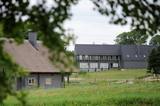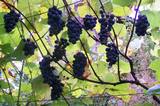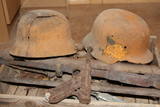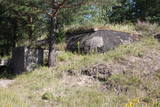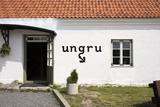| Nr | Name | Beschreibung |
|---|---|---|
|
Eine der eindrucksvollen Reliefgestaltungen im Baltikum. Bei Sigulda erreicht das Urstromtal eine maximale Tiefe von 85 m ( Breite ung. 1 km). Schöne Sandsteinaufschlüsse aus dem Devon ist ein Anziehungspunkt. |
||
|
In 1951, when it died, the pine tree had a circumference of 4.63 metres. It was the thickest pine tree in the Baltic States
This is one of the few trees with such a long history for which age has been determined by counting up circles – 370 years. All that’s left is a conserved part of the stump at the side of the road. Cross-sections of the stump are on exhibit at the Latvian Museum of Nature and the Latvian Ethnographic Open-Air Museum.
|
||
|
Die Kornkammer befindet sich am Rand der Straße Dviete – Bebrene. Das erneuerte Haus ist im Jahr 1874 gebaut worden. Nach dem Ersten Weltkrieg bis zum Jahr 1929, als die katholische Kirche von Dviete erneuert wurde, wurde diese Kornkammer als ein Gebetsraum verwendet. |
||
|
Lauku viensēta ar 8,9 ha lielu teritoriju atrodas Alītas rajonā, netālu no Simnas pilsētas pie gleznaina Atesio ezera Atesninki ciemā.100 m attālumā no ūdens ierīkots viesu nams ar 70 gultas vietām. Piemērota svinību un konferenču rīkošanai līdz 100 personām. Iespēja pašiem gatavot ēst, jo aprīkota ar plašu virtuvi. Lauku sēta radīta gan aktīvai, gan mierīgai atpūtai. Ir basketbola un volejbola laukumi, bērnu rotaļu laukums, dārzs, zvejas būdas, grilla vieta. Bezmaksas izmantojami 4 ūdens velosipēdi, kanoe vai koka laivas. Pirts patīkamai laika pavadīšanai. |
||
|
The visitors are offered the excursion around the wine garden and the story about different sorts of grapes and the secrets of wine-making. During the excursion the vistiors can learn about the traditions of growing grapes in Latvia, to see and taste the newest tendencies of grape selectioning,as well as receive advice on growing and tending grapes. It is also possible to try home-made wines and buy grapes saplings. |
||
|
Meža māja (Das Waldhaus) – wurde 1933
gebaut und ist eins der leuchtendsten Beispiele
für den nationalen Romantizismus in Lettland.
Anfangs war es ein in weiter Umgebung
bekanntes Restaurant „Jautrais ods” (die Heitere
Mücke). Nach dem Zweiten Weltkrieg wurde in
dem Gebäude ein Sanatorium für Kinder
eingerichtet – „Das Waldhaus“. 1997 zusammen
mit der Gründung vom Nationalpark Ķemeri
wurde es zum Haus der Administration vom Park
mit einem modernen Besucherzentrum und Platz
für verschiedene naturbezogene Ausbildungs
veranstaltungen.
|
||
|
Der Töpfer Stanislavs Vilums widmet sich der traditionellen Schwarzkeramik und verwendet dazu Ton aus Lettgallen. Dabei verwendet er keine industriellen Werkzeuge und der Brandofen wird mit Holz geheizt. Die Arbeit mit der Töpferscheibe wird demonstriert und der Brennprozess erläutert. Man kann versuchen, selbst mit Ton zu arbeiten. Die Töpferwaren stehen auch zum Verkauf. |
||
|
The “Zoltners” restaurant offers dainty dishes from fresh seasonal products. The key philosophy of the menu is staying natural and unsophisticated. Endijs Vīnerts, the restaurant chef, has a special approach to create the combinations of tastes that are characteristic to North Europe and to discover new nuances of the tastes of local products. |
||
|
In Ugāle im Haus Silmači ist ein kleines Museum eingerichtet worden. Die Besucher haben die Möglichkeit in Begleitung des Einrichters des Museums Andrejs Ķeizers den Niederlassungsplatz der Kompanie 2 des Battailons von Rubeņi, einen Bunker und die Kampfplätze von oben erwähnten militärischen Gruppierung zu besichtigen.
|
||
|
Er befindet sich unweit von der Landstrasse A 8, westlich des Hauses „Batari“, wo am 22.März 1919 ein Kampf der Brigade des Generals Balodis gegen die Bolschewiken stattgefunden hatte. Errichtet 1936. |
||
|
Ungefähr eineinhalb Kilometer östlich von Lūžņa an der Einmündung des Flusses Lūža in baltischen See ist noch eine Küstenbatterie auggestellt. Dortselbst sind auch die Überreste der Militärgebäude der sowjetischen Armee erhalten geblieben.
|
||
|
72 types of wild rhododendrons with 193 different species
This is the only specialised rhododendron nursery in the Baltic States. Specialists there work on different kinds of rhododendrons, seeking to produce decorative and winter-resistant types of the flower. The nursery also sells plants. In the facility’s pine forest, which covers 11.8 hectares, you can see a large collection of rhododendrons from all over the world.
There are 64 winter-resistant types of rhododendrons at “Babīte,” including “Alma Mater,” “Academia Scientiarum,” “Emeritus,” “Eduards Smiļģis,” “Dita Krenberga,” and others (these were developed by Rihards Kondratovičs). All of these are appropriate for Northern Europe.
|
||
|
The centre was opened in 2018 with the aim of facilitating tourism in Alsunga and the historical Suiti territory and to offer information about the district, thus establishing a positive and attractive image for Alsunga and the historical territory in Latvia and abroad. |
||
|
Ungru is a seaside hotel in the north of Hiiumaa. There is a high-class restaurant on the ground floor. The second floor has 4 rooms with all amenities. Dauble Deluxe beds with sea views. |
||
|
On the second Saturday of each month, farmers, home manufacturers and craftspeople gather together to offer their products. You will always find tasty and useful things here. |
||
|
Eine der ältesten Ortschaften Litauens. Schon im 14. Jh befand sich hier eine Holzburg. Der 20 m hohe Merķine-Burgberg an der Mündung der Flüsse Merkys und Nemunas. |
||
|
ZS "Jundas" Bauskas novada Vecsaules pagastā saimniecisko darbību uzsāka 2016. gadā. Audzē gaļas šķirņu krustojumu liellopus, tos nobarojot gaļas ražošanai. Strādā atbilstoši bioloģiskas saimniekošanas prasībām. |
||
|
The rock is along the main street of Krāslava and is found at Augusta Street 12. After major reconstruction of the city’s infrastructure, the rock was successfully integrated into the surrounding landscape. The rock is 2.8 m long, 2.2 m wide and 700 cm high. It once served as a border stone for the village of Krāslava. It was placed there in 1729 to commemorate the day when the noble Plater dynasty bought Krāslava. The dynasty’s seal is engraved in the side of the rock along with the date when it was installed. Legend has it that Polish King Augustus II dined at the rock after a hunt, and that is why it is known as Augustus’ Rock. |
||
|
Das Restaurant befindet sich in dem großen Saal des rekonstruierten Landgutes von Liepupe. Hier werden die alten Vorbereitungstraditionen von ländlichen Speisen mit den modernen Methoden verbunden. Das Restaurant arbeitet mit Bauern zusammen. Grüne Kräuter und Gewürze sind aus dem Garten des Landgutes. Gäste können an der Vorbereitung der Speisen auf einem Holzherd in einer Küche aus alten Zeiten teilnehmen. Lettische Küche: Roggenbrotkanapee, Auslese von lettischen Käsen, ländlicher Salat mit grünen Kräutern, gegrillte Gemüse der Saison, Brühe des Landgutes, Speisen aus einheimischen Fischen, gebratene Schweineschnitzel, in Gewürzen gebratenes Lamm. |
||
|
A small food producer in Vidzeme, which is engaged in the processing of vegetables, fruits and berries, producing healthy snacks without sugar and flour. Offers tasting tours, master classes on vegetable truffles and healthy cakes, actively involving guests. Soon there will be a lunch offer - a special kale cabbage soup. |
||



